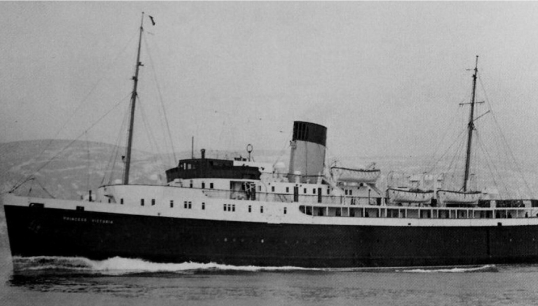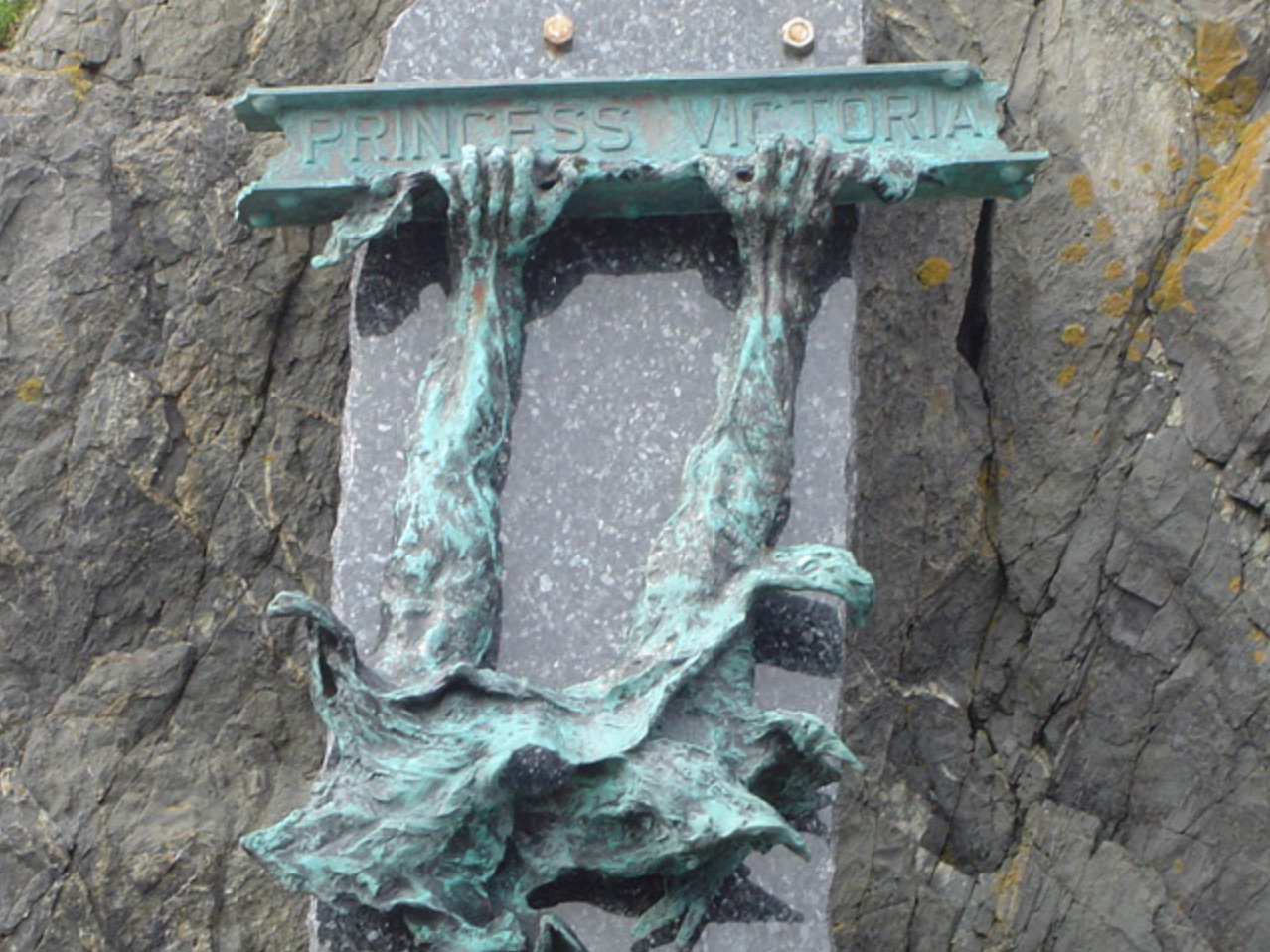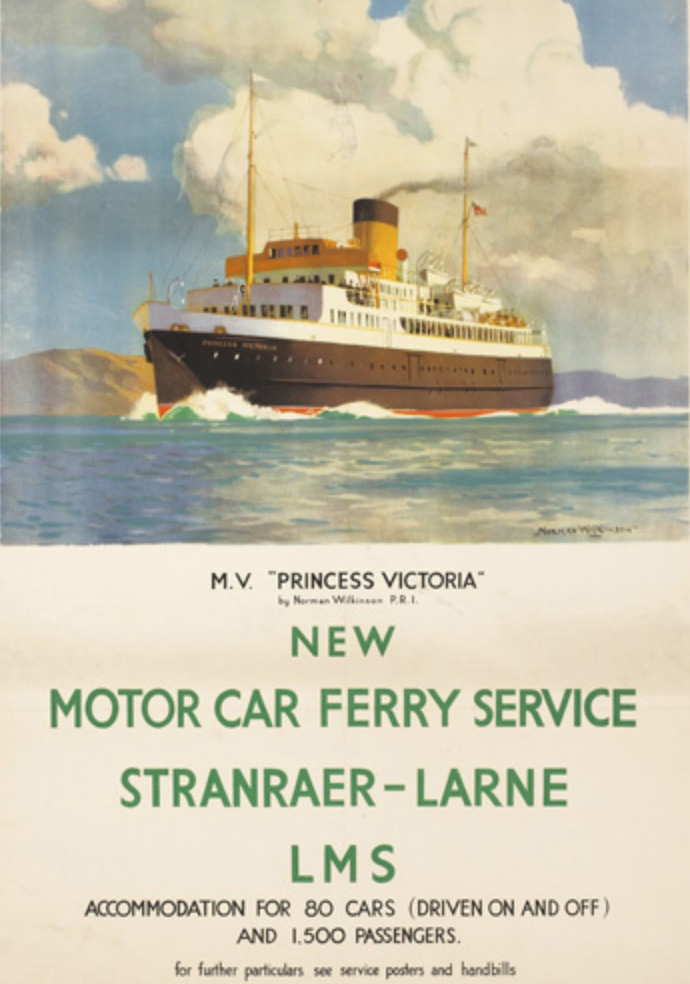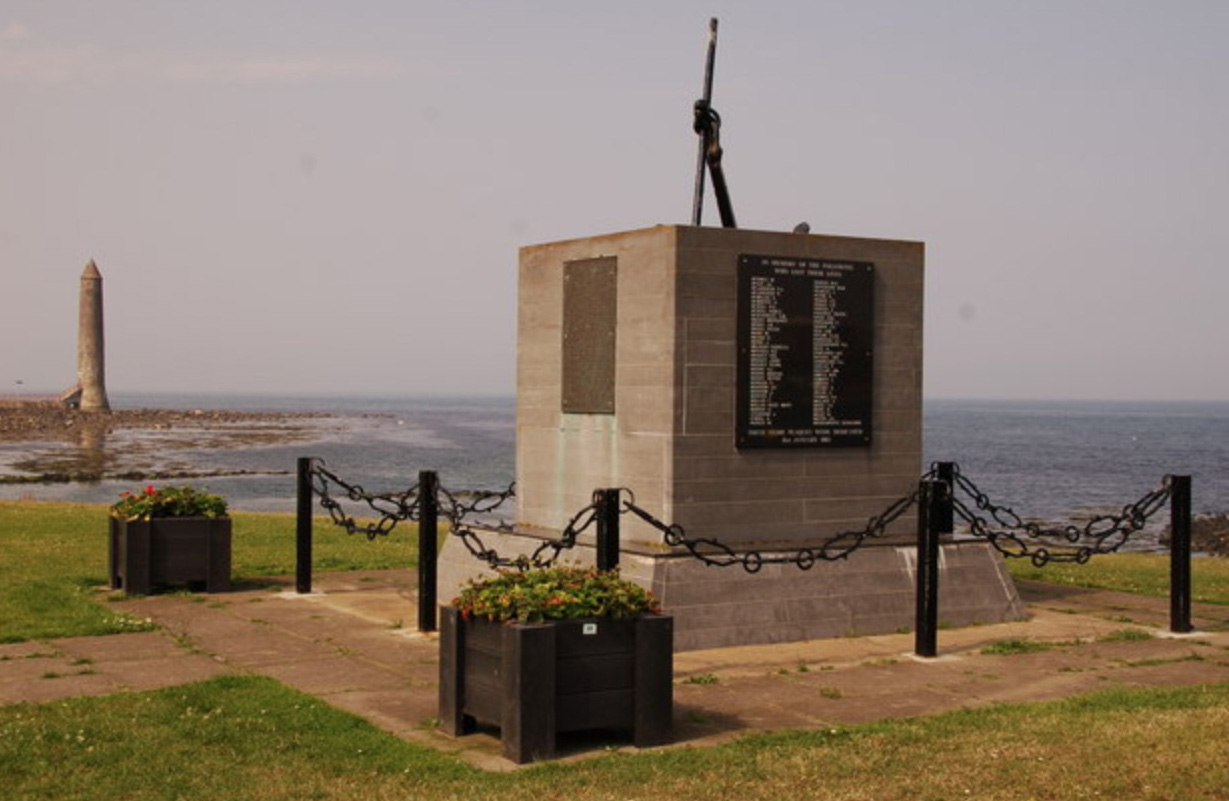Princess Victoria

The disaster
A total of 133 passengers and crew died when the 2,694grt vessel ship capsized and sank after its stern doors were, as the official inquiry determined, 'burst open by a heavy sea' barely two hours after it left Stranraer on the morning of 31 January 1953.
On its fateful last day, Princess Victoria left Stranraer for Larne at around 0745hrs, carrying 127 passengers and 49 crew. Soon after leaving the mouth of Loch Ryan at 0830hrs, the ship ran into the teeth of a severe gale with force 12 winds and 30ft seas. At around 0900hrs the stern doors were stove in and water began to flood the car deck, rapidly leading to a 10 degree starboard list.
As the cargo shifted and the water level rose, the list grew – increasing to 35 degrees within three hours – and the ship sent a series of distress calls warning of the deteriorating situation, especially once the starboard engineroom flooded at 1252hrs.
Because of the list, lifeboats could not be launched and most of the survivors in them had found places after they floated clear. One boat, carrying women and children, was seen to overturn near the ship.
The response
Several merchant ships, two RNLI boats and a Royal Navy destroyer responded to Princess Victoria's distress calls, but because the ship's location had been incorrectly reported they were unable to reach the ship before it sank soon after 1400hrs.
All the ship's officers died in the accident, and radio officer David Broadfoot was awarded a posthumous George Cross in recognition of his efforts to broadcast distress signals until the ship sank. Princess Victoria's master, Captain James Ferguson, was awarded a posthumous George Medal, and the masters of four small cargoships which went to the aid of the ferry were awarded OBEs.
The inquiry
The 35-day court of inquiry determined that Princess Victoria was in an unseaworthy condition when it departed for Larne as a consequence of the inadequate strength of the stern doors and the lack of sufficient scuppers on the car deck to clear the water which accumulated there.
It laid the blame for the incident on the owners and managers, stating that they had failed to provide stern doors sufficiently strong to withstand the sort of conditions 'which may be reasonably expected to occur from time to time in the North Channel'.
James McSparran, a lawyer representing Union members on the ship, told the inquiry that previous incidents should have provided 'unmistakable warnings to the vessel's authorities that her start doors required strengthening'.
Lessons not learned
Following an incident in October 1949, when Princess Victoria encountered heavy seas on the voyage to Larne, and another incident in November 1951, when the stern doors were damaged, and the car deck flooded, proposals for the fitting of four bigger scuppers on the car deck were made, but never acted on.
The inquiry report pointedly stated: 'The Court fails to comprehend why, after the 1951 incident, the necessity for stronger doors had not become a matter of urgent necessity.'
The inquiry also concluded that the incident had highlighted 'the evils of remote control' – with the master having to report any issues to a head office 400 miles away in London.
Jack Hunter, who wrote a definitive account of the incident, argued that later ro-ro losses showed that evidence of design flaws revealed in the Princess Victoria disaster had been 'sadly ignored'. Had the lessons about the strength of car deck doors and the need for transverse bulkheads been acted upon in the 1950s, 'then the disasters that have blotted the history of modern car ferries need never have happened'.



Contribute
Are you knowledgeable about this vessel?
Submit your contribution to this article to our editorial team.
Write to usView more ships of the past
HMS Beagle
Launched 200 years ago, HMS Beagle has been described as one of the most important ships in history – thanks to the observations on evolution and natural selection that its famous passenger Charles Darwin made during a five-year voyage around the world between 1831 and 1836.
Common.ReadMoreHMS Beagle
Ruahine
Entering into service just over 70 years ago, the Ruahine was the last passenger-carrying ship built for the New Zealand Shipping Company (NZSC), and the third to bear the name – which means 'wise woman' in Māori.
Common.ReadMoreRuahine
Royston Grange
The horrific collision between the UK-flagged Royston Grange and a fully-laden oil tanker in the River Plate in May 1972 not only led to the loss of 82 lives but also left lessons that continue to resonate today
Common.ReadMore